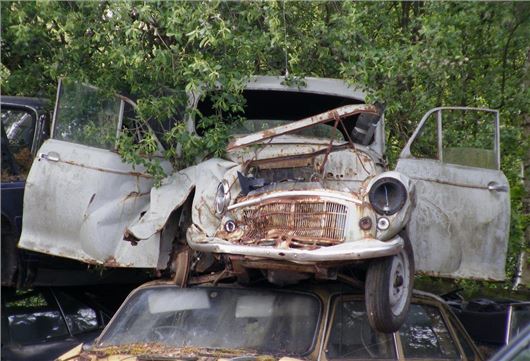Are classic cars dangerous?

Our news story covering the tragic case of the MGB driver killed when a minicab ran into the back of his car whilst stationary in London traffic raised a number of issues – with at least one motoring organisation suggesting that classic car owners 'need to know the risks' when driving older vehicles on the road. But is running a classic car really as dangerous as some headline writers would have us believe?
It’s true that we’ve seen a number of fatalities involving classic cars over the last couple of years, on both road and track. At last year’s Silverstone Classic, 68-year-old historic racer Denis Welch lost his life when his 1960 Lotus 18 clipped another car and rolled over. That tragic incident followed on from the deaths of Nick Sennett, driver of the 1963 MGB mentioned above, and Anne Pattrick who died last year when the Ford Anglia 105E in which she was a passenger collided with a truck on the M1 motorway.
Accidents are, of course, a fact of motoring life, despite the UK having one of the best records in Europe when it comes to deaths and serious injuries on our roads. But are you more likely to be killed if you’re a classic car driver?
It’s true that today’s new cars are extremely safe compared with their predecessors of thirty, forty or fifty years ago – although many of those cars were also considered safe in their day, as innovations like collapsible steering wheels and front seat belts began to be taken for granted from the 1960s. Dual-circuit braking systems drastically reduced the chances of brake failure, whilst the widespread use of ABS from the 1980s onwards brought more progress. And yet compared with today’s EuroNCAP tested cars, with their multiple airbags, massively strong crumple zones and high levels of passenger protection, those older models might now be seen as rather basic.
A vehicle’s structure is a major factor when it comes to safety, of course. At the recent trial of minicab driver Kugannesan Balasubramaniam, whose modern Peugeot rammed the stationary MGB, the prosecution claimed that the older car “folded like a penknife”, the driver suffering fatal injuries when his head hit the top of the windscreen. Even more shockingly, this occurred when the MGB was stationary on a busy London road.
AA spokesman Ian Crowder, when approached by The Telegraph, suggested that classic car owners “need to be aware of the risks when they take to the road in a less resilient vehicle”, and should “drive in a manner which respects modern vehicles”. And yet, aside from the headline-grabbing tragedies mentioned here, fatal accidents involving classic cars are still relatively rare.
The fact that most classic insurance premiums are so reasonably priced confirms that the insurance industry sees older cars as relatively low-risk. This is because classic cars generally cover fewer miles than their modern counterparts, are extremely well maintained by enthusiasts, and are driven with care by owners who lavish time and money on them. These are the kinds of motorists who are perhaps less likely to take risks.
'Ah yes,' say critics, 'but what happens when you’re involved in an accident through no fault of your own?' It’s a valid point, of course. Have a major crash whilst at the wheel of a classic Mini and you’re more likely to suffer serious injury than if you’re driving the bigger, stronger, more robust modern-day car of the same name. That’s obvious. On the other hand, can anyone name a hobby that is genuinely risk-free?
One thing’s for sure: with spring finally on the horizon and thousands of enthusiasts around the UK looking forward to another season of classic motoring, the relatively few tragic accidents that we read about won’t deter us from taking to the road. Yes, we know the risks. And yes, most of us drive with care, well aware of our vulnerability when compared with the cocoon-like environment of a new car. But we’re going to carry on driving – which is surely the biggest tribute we can pay to the people who have tragically died in classic car related accidents over the years.
WHAT DO YOU THINK? Do you feel safe driving your classic car? Do you think that older vehicles are more dangerous than their modern equivalents? Whatever your views, have your say below or send an email to keith.moody@honestjohn.co.uk.
Compare classic car insurance quotes and buy online. A friendly service offering access to a range of policies and benefits.


 Keith Moody
Keith Moody
 NEC classic motor show 2020 postponed due to Covid 19 concerns
NEC classic motor show 2020 postponed due to Covid 19 concerns
 Classic car auction house Coys goes into administration
Classic car auction house Coys goes into administration
 Motor racing great Sir Stirling Moss dies aged 90
Motor racing great Sir Stirling Moss dies aged 90
 Alfa Romeo anniversary races set for Silverstone
Alfa Romeo anniversary races set for Silverstone
 Government to make E5 fuel available for classic owners
Government to make E5 fuel available for classic owners
 Plans to introduce cleaner fuel could damage more than a million classic cars
Plans to introduce cleaner fuel could damage more than a million classic cars
 Top 10: Classic cars from the Gulf motor racing heritage collection
Top 10: Classic cars from the Gulf motor racing heritage collection


